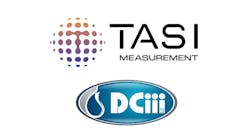As semiconductor technology advances, increased attention to the purity of manufacturing material is required. To more accurately quantify trace concentrations of contaminants, Balazs Analytical Services (www.balazs.com), a division of Air Liquide Electronics U.S. LP, has introduced PPQ Analysis, a new analytical technique for accurate quantification of ultra-trace metal concentrations in water and process chemicals down to part per quadrillion (PPQ) levels.
The ability to provide accurate and routine PPQ Analysis is the result of a multi-year R&D effort to develop and incorporate ultra-clean processes throughout the sample lifetime. Special care begins at initial sampling and sample preparation and continues through the final blank and sample analysis by Inductively Coupled Plasma Mass Spectrometry (ICP-MS).
Alex Tremblot, general manager of Balazs explained in a prepared statement, "As the industry moves to 90nm production and more advanced technology nodes, it is experiencing problems not observed before. Understanding contamination in ultrapure water and high-purity cleaning chemistries is becoming critical. Balazs has developed true quantitative techniques to identify contaminants at PPQ levels. PPQ Analysis has already been used to quantify low-level Ni and Ca contamination to help resolve yield issues."
To perform PPQ Analysis, a self-cleaning sampling device is used to take point-of-use samples. The samples are then prepared and analyzed in duplicate to ensure quality control and demonstrate the repeatability of the method. In addition, each sample undergoes ICP-MS analysis with a proprietary system to lower matrix effects. The final indications of method surety are spike recoveries performed at PPQ concentrations resulting in the 90 to100 percent range, confirming that the data is real.

